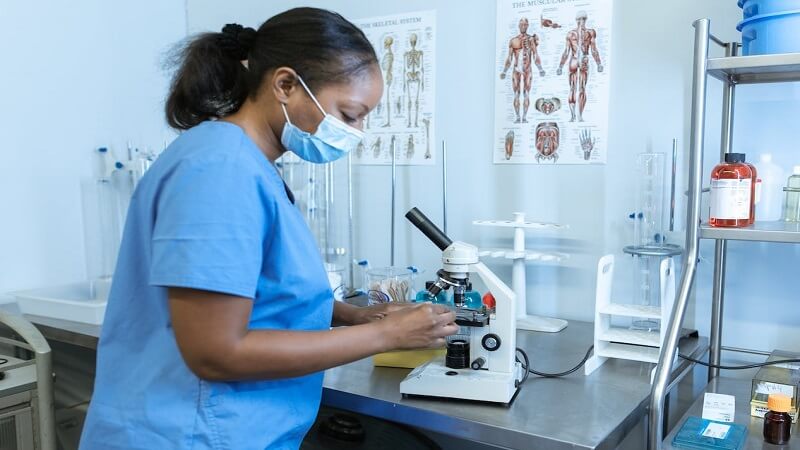Technology is essential for increasing productivity, simplifying procedures, and ultimately improving patient care in the ever-changing healthcare industry. Leveraging innovative technological solutions is not just a preference but a necessity for healthcare providers aiming to meet the increasing demands of the industry.
1. Electronic Health Records (EHR) Integration
Integrating Electronic Health Records (EHRs) is essential to modern healthcare since it makes patient data management easier and promotes a more unified method of providing treatment. By centralizing patient information, EHR integration empowers healthcare professionals with immediate access to comprehensive medical histories. This accessibility not only enhances the efficiency of patient care but also minimizes the likelihood of errors associated with fragmented or outdated data.
The concept of inter-rater reliability, emphasizing the consistency and accuracy of data interpretation among different raters or users, aligns seamlessly with the goal of EHR integration, ensuring that healthcare providers can rely on standardized and reliable information for informed decision-making.
2. Telehealth Services
The integration of technology in healthcare through telehealth services, including remote patient monitoring and virtual consultations, has revolutionized healthcare delivery. This innovation extends the reach of healthcare providers, offering efficient alternatives to in-person visits and significantly enhancing accessibility, especially in underserved areas.
Remote patient monitoring utilizes wearable devices for real-time data tracking, enabling timely interventions and personalized care plans. Virtual consultations facilitate direct communication between patients and healthcare providers, reducing the need for extensive travel and minimizing the burden on physical healthcare facilities. As technology evolves, telehealth continues to be a powerful tool in making quality medical services more accessible and convenient for diverse patient populations.
3. Data Analytics for Informed Decision-Making
The incorporation of advanced analytics tools in healthcare signifies a transformative shift toward data-driven decision-making. This approach empowers healthcare organizations to extract meaningful insights from vast datasets, optimize resources, identify trends, and improve patient outcomes. Data analytics enables proactive identification of disease trends, efficient resource allocation, and continuous improvement in clinical processes.
This data-driven paradigm not only enhances operational efficiency but also fosters adaptability in addressing evolving healthcare challenges. As technology evolves, the integration of data analytics emerges as a crucial factor in elevating healthcare decision-making, ensuring a more responsive and patient-centric healthcare system.
4. Appointment Scheduling and Resource Management
The integration of technology in healthcare brings efficiency to appointment scheduling and resource management, revolutionizing the way healthcare facilities operate. Automated scheduling systems streamline the appointment process, reducing administrative burdens and minimizing wait times for patients. These systems allow for seamless coordination of appointments, optimizing the utilization of healthcare resources and ensuring that facilities operate at optimal capacity.
While technology constantly evolves across multiple industries, a specialized area known as hot runners has emerged as significant, specifically in injection molding, which is crucial in healthcare, particularly in the production of medical devices. Hot runners enhance efficiency by channeling molten plastic into multiple cavities simultaneously. This precision and accuracy are vital in an industry that demands high-quality and consistent device production. Hot runners provide substantial contributions by streamlining the injection molding process and minimizing material usage in terms of delivering cost-effectiveness in medical device manufacturing. Moreover, hot runners are pivotal in designing and manufacturing wearable health technologies, where intricate, lightweight, and durable components are required. Integrating hot runner systems within healthcare’s technical advancements is thus an essential factor in driving efficiency and facilitating desirable patient outcomes within wearable health technology. Consequently, as technology continues to evolve, the understanding and application of specific systems like hot runners, with their significant improvements in precision, repeatability, and overall production efficiency, have proven to offer substantial benefits.
By leveraging technology, healthcare providers can enhance patient satisfaction through convenient scheduling options, reduce the likelihood of scheduling errors, and improve overall workflow efficiency. This is advantageous for healthcare administrators as well as for a more efficient and patient-focused healthcare system. As technology continues to advance, the ongoing integration of automated scheduling and resource management stands as a key component in optimizing the efficiency and effectiveness of healthcare service delivery.
5. Wearable Health Technologies
Wearable health technologies represent a significant stride towards empowering individuals in their pursuit of well-being. These devices and applications, seamlessly integrated into daily life, offer real-time health data that enables users to engage in preventive care measures actively. From monitoring vital signs to tracking physical activity and sleep patterns, wearable technologies provide a holistic view of one’s health. This accessibility to real-time data not only fosters a sense of personal responsibility for health but also allows for early detection of potential issues.
By facilitating continuous monitoring, wearable health technologies contribute to proactive health management, potentially reducing the frequency of hospital visits. The integration of these technologies into everyday life promotes a culture of health consciousness, encouraging individuals to make informed lifestyle choices and actively participate in maintaining their overall well-being. As technology continues to evolve, wearable health technologies stand as powerful tools in the hands of individuals, promoting a shift towards personalized and preventive healthcare.
Conclusion
The integration of technology in healthcare is not just about staying current; it’s a strategic imperative for driving efficiency, improving patient experiences, and achieving better healthcare outcomes. Taking advantage of these technology developments puts healthcare practitioners at the forefront of a sector that is changing quickly. By embracing and leveraging technology, healthcare providers not only enhance their operational capabilities but also contribute to a patient-centric, innovative, and adaptive healthcare landscape that improves overall outcomes and quality of care.
